Not a member yet? Sign Up!
Info
Please use real email address to activate your registration
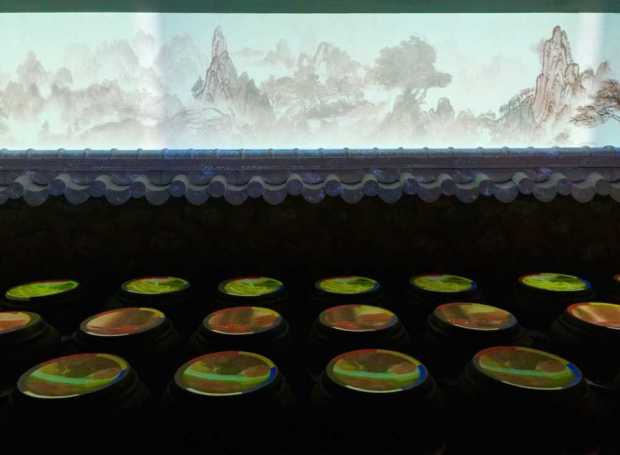
In recent years, hallyu, the Korean wave, that swept the world driven by K-Pop and K-Dramas, has catapulted the fame of hansik, Korean traditional food that dates back almost 5000 years.
Basically Korean meals consist of bap (rice) and banchan (side dishes) comprising a lot of vegetables, meat, fish and poultry. The hansik tradition, however, is not only about ingredients, but also about the historical, cultural, nutritional, and philosophical background of food.
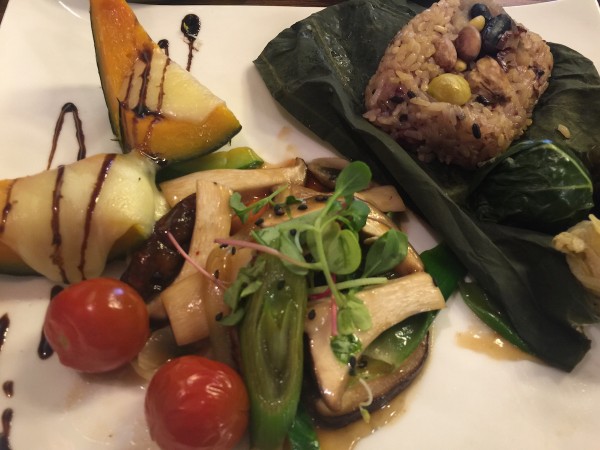
In my recent short trip to Seoul I was fortunate to meet Veronica Tae-Ahn Kang, the founder of Gastro Tour Seoul who invited me to explore hansik in the city’s nooks and crannies. Veronica who graduated from Switzerland’s Institut Hôtelier César Ritz and holds a Master’s of Tourism degree is a food professor, communicator and food traveler who has traveled to many countries.
Namdaemun Market
We strolled along Namdaemun Market, the oldest and largest traditional market in Korea with more than 1,000 shops, stalls, and several department stores nearby. I have never seen so many ginsengs where shops adjacent to each other promote this medicinal herb for energy boost, and lowering blood sugar and cholesterol levels.
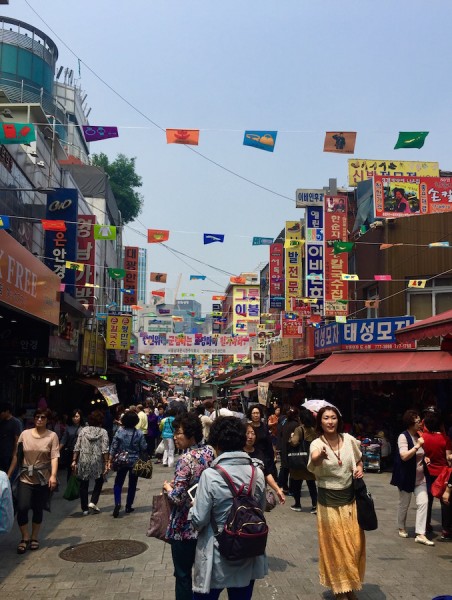
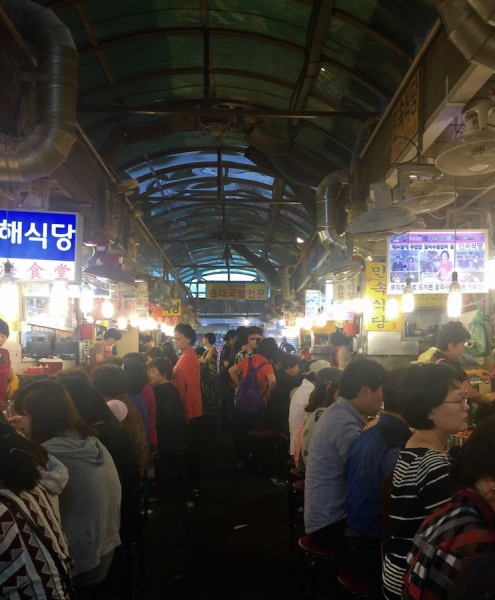
Veronica pointed to the Kalguksu Alley where old Korean ladies yelling alternately to offer all kinds of noodle soups. Here customers are not kings or queens as they are squeezed into seats adjacent to each other where there is almost no room to move. The freshness and the variety of noodle soups, however, make the inconvenience bearable.
Chef Kim Bong-Chan
We passed Gate 2 of Namdaemun Market and went through an underpass, headed to a restaurant that serves well being food. Traditionally, Koreans view food as medicine that keeps one healthy and strong. Owner and chef Kim Bong Chan who studied medicinal food guided us to a table full of healthy plant-based food. I was really touched by how he went through all the trouble to prepare lunch from exclusive ingredients.
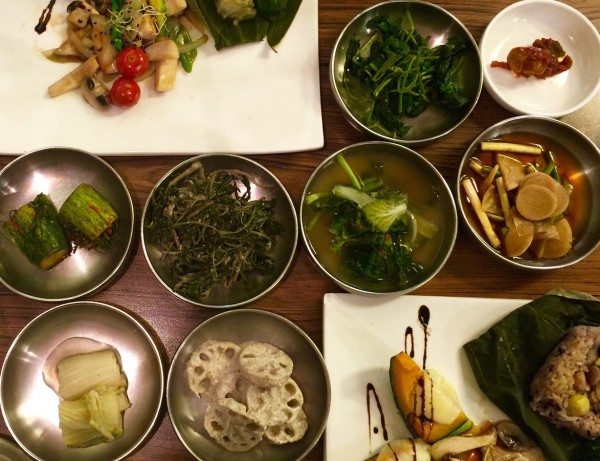
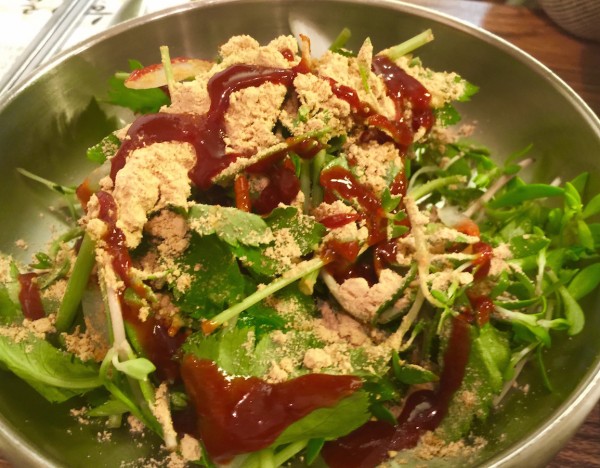
On the table were plates and little bowls containing maesil pickle (green plum), tofu with sauteed mushrooms, yeongeun (lotus roots with sesame paste), wild vegetables from Ulleungdo Island, white kimchi and cucumber kimchi, chwinamul (mountain vegetables), radish pickle, Korean pancakes, and assorted seasonal vegies with spicy red chilly sauce and bean powder.
While were were savoring the healthy meal, Chef Kim stood nearby ready to satisfy our curiosity regarding the origin of the ingredients as well as how to prepare the dishes.
K-Style Hub
Our lunch was supposed to be a Korean tasting menu but we ended up with a big lunch, hence we walked many blocks to K-Style hub to, hopefully, burn some calories.
K-Style Hub is a high-tech Korean Cuisine Cultural Center where visitors can learn about the history and philosophy of hansik and experience traditional and contemporary Korean food in cooking classes and tasting sessions. We met Ms. Kim Mi-Kyeong, the Project Director of K-Style Hub who warmly welcomed us to the 3-floor facilities in the city center.
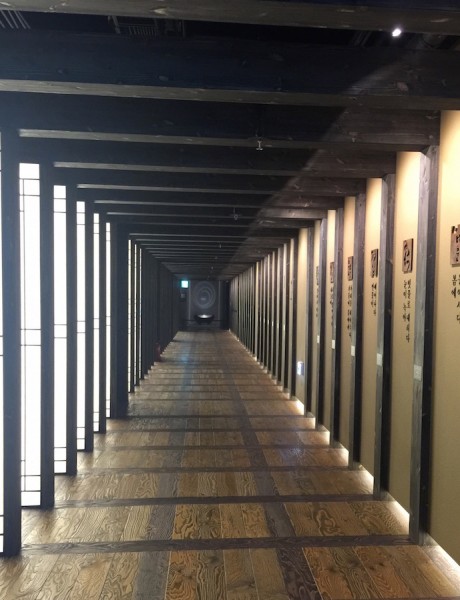
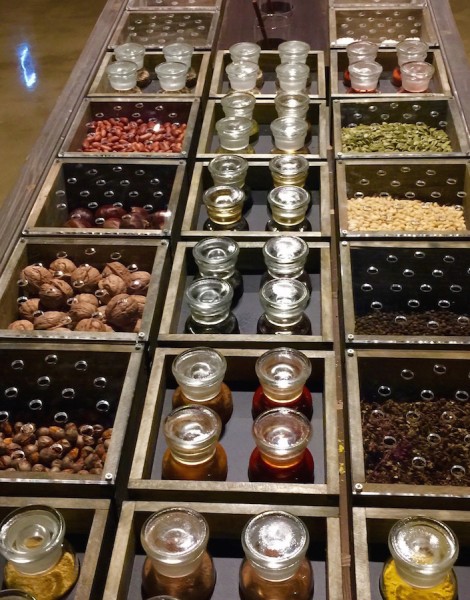
In the Korean Food Exhibition Hall, dim lights and soft traditional music carried us to 24 jeol-gi, Korea’s 24 traditional seasons. Each has its own significance in terms of crops planted and harvested to seasonal foods presented. The hall also displays the past, present and future of Korean food.
Korean Food Experience Hall is an ultra-modern Korean-style kitchen for Korean cooking classes. In the beginner class participants learn how to cook Korean dishes that are easy to prepare such as bulgogi and ssam (one-plate menu) whereas in the advanced class students learn how to cook more complicated traditional Korean food such as chiljeolpan (7 flavors menu) and grilled tofu bibimbap. There is a cozy area where participants can enjoy the food they cook, read about Korean food culture or collect some free recipes.
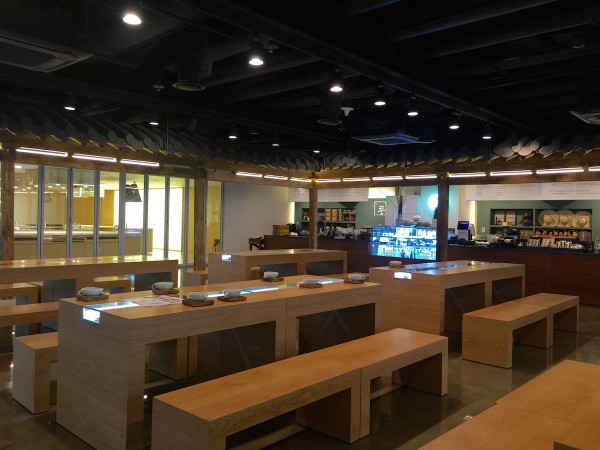
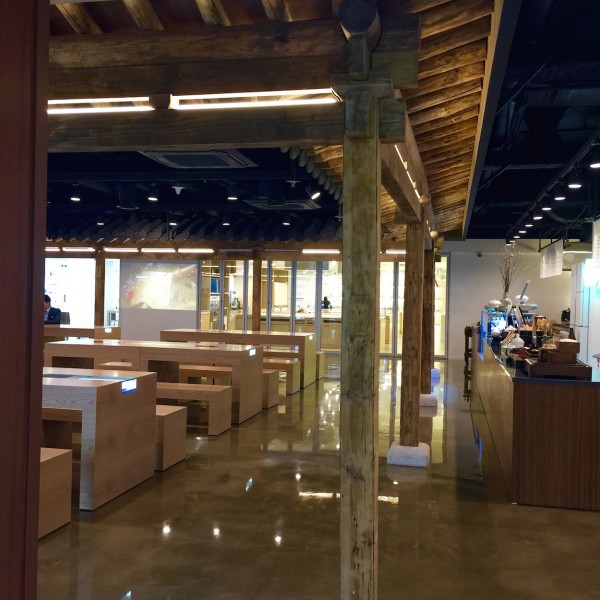
Art Market Hall sells hanbok (traditional Korean costume) and soban (small potable dining table), art works, traditional Korean crafts, recipe books, and Korean agro-products.
Tongin Market
Our next stop is the Tongin Market near Gyeongbokgung Palace. It is a big alley with 75 stores, most of which are restaurants and grocery stores. There are some food stalls stationed in front of the stores, selling colorful Korean traditional foods and condiments.
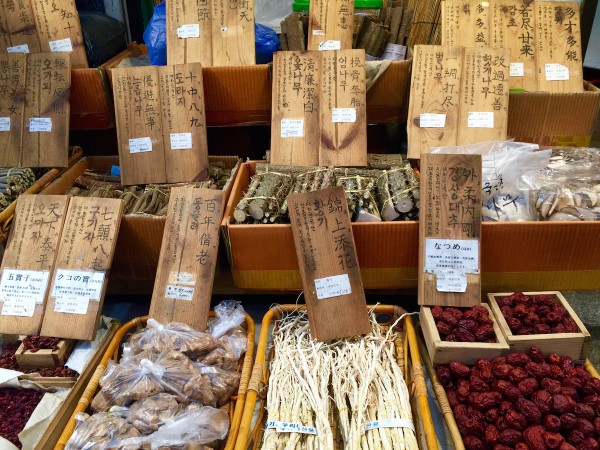
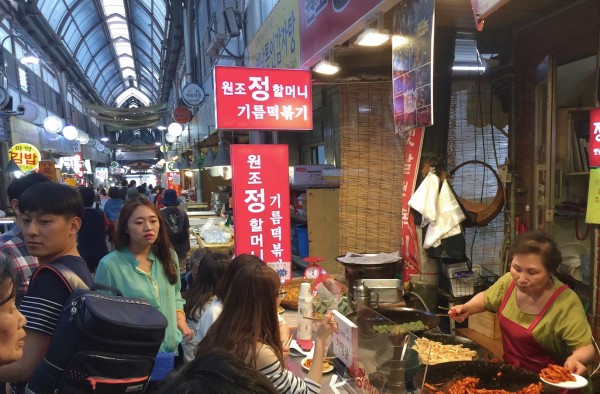
The most popular snack at Tongin Market is gireum tteokbokki (pan fried rice cakes) sold by a vendor who has been there for more than 30 years.
Noshi's Table
The finale of our hansik exploration was Noshi’s table, a quaint place serving Korean traditional desserts with a modern twist, a few blocks from Tongin Market. Noshi’s table also has a gallery with different sizes of gold-color food bowls for sale
Noshi’s Table has 13 cold and warm desserts on the menu, from which we settled for warm red bean cream with cinnamon, and rice cakes with ice cream. The combination of flavors, textures, temperatures and tastes were unimaginable.
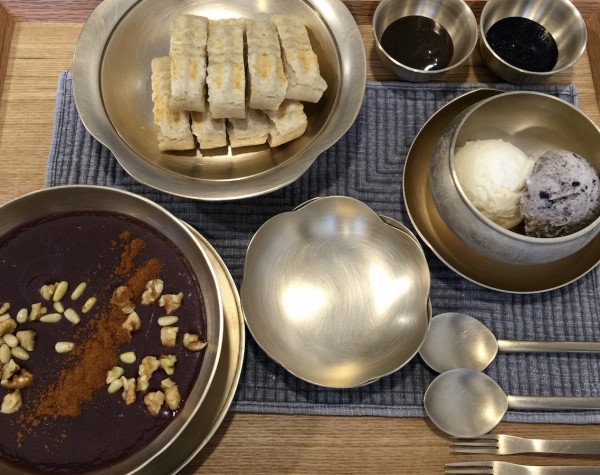
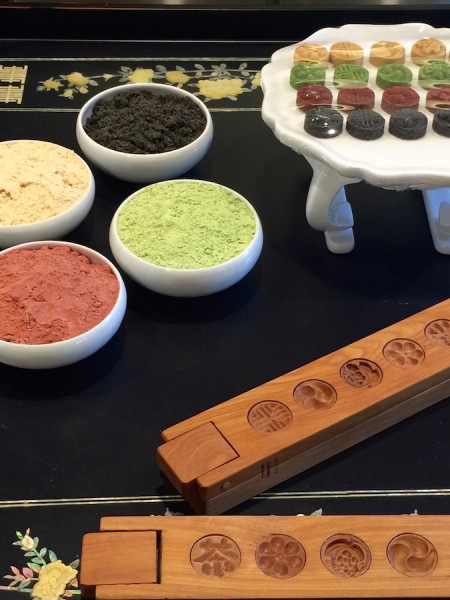
Half-a-day is certainly not enough to explore Korea’s 5,000-year food culture, but Veronica was able to enhance my knowledge in such a short time, by tracing the ancient to the modern food scenes in Seoul complemented with The Taste of Korea, hansik videos and recipe book.
-----------
Text: Amanda Niode. Images: Omar Niode Foundation